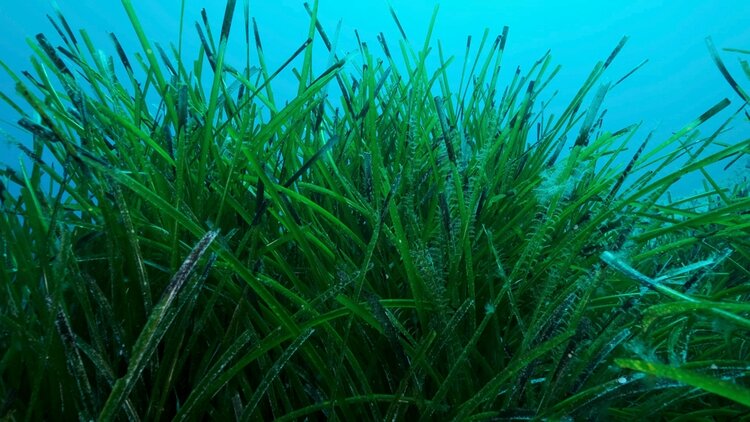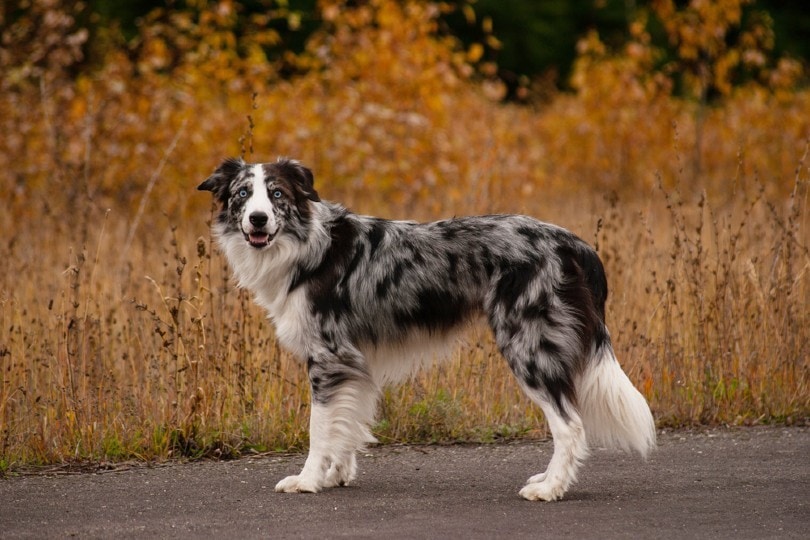
If you are looking for a low maintenance and easy-to-grow aquarium plant that not only looks good in an aquarium, but also helps to improve the overall appearance and water quality, then eelgrass (commonly referred to as Vallisneria) is a great choice!
This plant originates from the temperate waters found across Europe, northern America, and southwest Asia. It has a grass-like appearance and looks striking as a background plant in many aquariums. Eelgrass is not demanding in terms of care, which makes it perfect for beginners who want a long carpeting plant to add visual depth and liveliness to their aquarium.
 Useful Information About Eelgrass
Useful Information About Eelgrass
| Family Name: | Hydrocharitaceae |
| Common Name: | Vallisneria |
| Origin: | Europe, northern America, Southwest Asia |
| Color: | Green with a reddish hue |
| Size: | 10–20 inches in length |
| Growth Rate: | Fast |
| Care Level: | Easy and beginner-friendly |
| Lighting: | Moderate |
| Water Conditions: | Freshwater, temperate |
| Minimum Tank Size: | 10 gallons |
| Supplements: | Root tabs or fertilizers, but not required |
| Placement: | Background, foreground |
| Propagation: | Runners |
| Compatibility: | Other foreground plants and freshwater fish |
Eelgrass Appearance
Eelgrass can range in color from light to dark green, with some leaves consisting of a reddish rust-colored hue. This plant has long leaves that look like grass that flow in the water with a ribbon-like structure. Once eelgrass is established in an aquarium under the right conditions, this plant with form an attractive carpet in the aquarium and spread through runners.
The color of this plant depends on the lighting, water temperature, and pH of the water. You will find that in high-lit conditions, eelgrass will take on a vivid green coloration with slender bladed leaves that can grow to a maximum height of 20 inches if the size of the aquariums allows it.
Eelgrass will not grow past the waterline, so the size of the aquarium is not much of an issue when growing this aquarium plant. This plant has strong white rhizome roots that attach themselves to the substrate and grow in a standard formation that is propagated by runners. Some aquarists will trim the tips of the eelgrass carpet to create a leveled look in the aquarium which can give planted aquariums a neater appearance.
Where to Find It?
Eelgrass is distributed worldwide and can be found in various states where it is sold for a relatively inexpensive price. You can find eelgrass at most local fish stores where aquatic plants are sold, but you can also purchase eelgrass from a reputable online source where it will either come in a black basket with foam where the roots are submerged, or you can purchase it as seedlings and plant it in your aquarium’s substrate.

General Care
The reason eelgrass is so undemanding is that this aquatic plant can be grown by both beginner and novice aquarists alike. It does not have to be fertilized to grow and reproduce properly, although a good fertilizer and CO2 system may increase this plant’s growth rate and help prevent it from becoming nutrient-deficient. A good substrate is required for this plant and most aquarists will choose to use high-quality aquarium soil rather than gravel or quartz sand.
Unlike most freshwater plants, eelgrass can tolerate a slightly high salinity content in the water and this plant seems to thrive in it. Eelgrass seems to grow best in shallow, cold-water conditions that best replicate its natural environment, but it will still grow well in a variety of different aquarium conditions.
Habitat, Tank Conditions & Setup
Tank Size
Eelgrass does have a minimum aquarium size of 10 gallons, but most growers will keep this plant in a tank that is larger than 20 gallons since eelgrass has the opportunity to grow quite fast and produces runners that can quickly overrun a small tank. The tank should have a decent height and length as this plant grows both horizontally when it propagates as well as vertically.
Water Temperature & pH
You can keep this plant in slightly hard water environments with a pH ranging from 7.0 to 8.2. Since eelgrass naturally grows in temperate waters, it will thrive best with a temperature ranging from 50° to 72° Fahrenheit. It is possible to keep this plant in a tropical environment, however, it might not thrive and grow as it would in its preferred temperature range.

Substrate
A sandy and muddy substrate will suffice for this aquarium plant, and it seems to do best in growth mediums made for aquatic plants because these types of substrates contain traces of minerals that can benefit eelgrass. There is a much lower success rate in terms of growth and propagation if this plant is grown in thick gravel substrates.
Plants
You can keep eelgrass with a variety of different slow-growing aquarium plants that have the same water parameter requirements. Keep in mind that floating plants such as frogbit or duckweed may block out essential light that this plant needs to grow. Amazon swords, mosses, and other foreground plants seem to grow well with eelgrass.
Lighting
Eelgrass requires moderate to high levels of artificial lighting from the top of the aquarium. This seems to work best for this plant in comparison to natural light from a window because of the uniform structure that eelgrass grows in. White lighting works best, and the lights can be kept on for a minimum of 6 hours to a maximum of 10.
Filtration
Eelgrass itself works as a form of filtration for an aquarium by absorbing nitrates and excess nutrients in the aquarium for growth, but a good filtration system is essential for the balance and health of the aquarium water. The filter current should not be too strong that it blows this plant around the aquarium—you might have trouble with this plant staying rooted. However, the filter should be used in the aquarium to help remove contaminants from the water column.

Planting Tips
Eelgrass should be planted on a substrate that has a depth of more than 1.5 inches so that it can establish a good root system to keep it anchored in the aquarium. You can also use a mixture of different substrates, but the roots establish best in soil substrates. If you want to help encourage this plant to root itself, you can use root tabs to provide this plant with the essential nutrients it needs to kickstart its growth.
Eelgrass should ideally be planted at the back of an aquarium where it can form a lush carpet and create runners, as growing it in the middle of an aquarium can block the view of other ornaments and plants in it.
The 3 Benefits of Having Eelgrass in Your Aquarium
1. Helps To Improve Water Quality
Eelgrass uses a lot of nitrates to grow which in return helps to keep the water filtered. You may find that once eelgrass has become established in an aquarium and grows large enough that it may help drastically lower the nitrate levels in an aquarium which in return provide purified water for any fish and invertebrates.
2. Provides a Hiding place
The slender and close-growing leaves of eelgrass make a great hiding place for fry, fish, snails, and shrimps. They can take shelter from other tank mates by hiding in between the plant and help reduce stress in fish that feel exposed without adequate hiding places in an aquarium.

3. Oxygenates The Water
During the day, aquatic plants such as eelgrass can give off oxygen into the water which helps to aerate the aquarium and provide your aquarium inhabitants with much-needed oxygen aside from physical aeration from an air stone or filter.
Concerns About Eelgrass
The main concern when it comes to caring for eelgrass in an aquarium is that it has the opportunity to grow quite rapidly in the right conditions. This can become a problem in small aquaria where this plant can overgrow in the aquarium. This can be mitigated by ensuring that you regularly trim the plant and remove any excess runners in places where you do not want the plant growing in your aquarium.
Another concern is that this plant may take up swim room and even grow over other plants in an aquarium. If the aquarium has a small bioload, it is also possible that eelgrass may compete with other plants for nutrients in the aquarium, which is when a good fertilizer will come in handy.
 Final Thoughts
Final Thoughts
Eelgrass can make a great aquarium plant for temperate freshwater aquariums. This plant is compatible with a variety of different fish and its fast growth rate, undemanding care requirements, and ability to thrive in various conditions make it perfect for adding greenery to planted aquariums. It helps to add a lovely green carpet to an aquarium and provide any live inhabitants with shelter and a more natural vibe.
Eelgrass can offer your aquarium more than just a lush green appearance, and it can be a great addition to many freshwater aquariums that meet this plant’s requirements.
Featured Image Credit: Andriy Nekrasov, Shutterstock

 Useful Information About Eelgrass
Useful Information About Eelgrass







